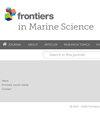芬兰冰局,其波罗的海海冰监测和业务概念
IF 3
2区 生物学
Q1 MARINE & FRESHWATER BIOLOGY
引用次数: 0
摘要
芬兰冰局是芬兰气象研究所(FMI)的一部分。根据芬兰立法的授权,它提供关于波罗的海冰况的资料。本文介绍了芬兰冰局使用的方法,数据源,产品,服务,数据集,以及支持在FMI进行的波罗的海海冰遥感和地球物理研究。芬兰冰局的前身于1915年开始制作冰图,为冬季航行提供冰况信息。直到今天,主要用户仍然是冬季航行当局,包括破冰船队和管理部门,以及航运界、科学家和公众。重点地区是波罗的海。通常,这项服务从10月中旬到5月底,以几种产品和格式提供最新的海冰信息。主要的冰况在冰图、冰报告和冰代码中描述,这些都是基于一系列不同的观测来源,如卫星图像,主要来自合成孔径雷达,以及破冰船和沿海观测者的水面观测。芬兰冰局有很长的海冰观测时间序列和手工分析的冰图档案。为了帮助用户和客户优化他们在冰出没水域的操作,芬兰冰服务提供各种预测长度的数值和人工海冰预报。芬兰冰局处理和传播卫星数据,并向用户提供咨询和顾问服务。由于FMI致力于开放数据政策,主要的冰服务产品是免费提供的。许多产品也可以通过哥白尼海洋服务(CMS)获得。本文章由计算机程序翻译,如有差异,请以英文原文为准。
The Finnish Ice Service, its sea-ice monitoring of the Baltic Sea and operational concept
The Finnish Ice Service is part of the Finnish Meteorological Institute (FMI). Based on the mandate in the Finnish legislation, it provides information on the ice conditions in the Baltic Sea. This paper introduces the methods used by the Finnish Ice Service, data sources, products, services, datasets, and supporting Baltic Sea ice remote sensing and geophysics research conducted at FMI. The predecessor of the Finnish Ice Service started its operational ice charting in 1915 to provide ice information for the winter navigation. To this day, the main users still are the winter navigation authorities, including the icebreaker fleet and management, as well as the shipping community, scientists and general public. The focus area is the Baltic Sea. Typically, the service operates from mid-October to the end of May, providing up-to-date sea-ice information in several products and formats. The prevailing ice situation is described in ice charts, ice reports and ice codes, which are based on a range of different observation sources like satellite images, predominantly from synthetic aperture radars, and surface observations from both icebreakers and coastal observers. The Finnish Ice Service has long sea ice observation timeseries and archives of manually analysed ice charts. To help users and customers optimize their operations in ice infested waters, the Finnish Ice Service provides numerical and manual sea ice forecasts with various forecast lengths. The Finnish Ice Service processes and disseminates satellite data and also provides advisory and consultant services to users. As FMI is committed to the open data policy, the main ice service products are provided free of charge. A number of products are also available through the Copernicus Marine Service (CMS).
求助全文
通过发布文献求助,成功后即可免费获取论文全文。
去求助
来源期刊

Frontiers in Marine Science
Agricultural and Biological Sciences-Aquatic Science
CiteScore
5.10
自引率
16.20%
发文量
2443
审稿时长
14 weeks
期刊介绍:
Frontiers in Marine Science publishes rigorously peer-reviewed research that advances our understanding of all aspects of the environment, biology, ecosystem functioning and human interactions with the oceans. Field Chief Editor Carlos M. Duarte at King Abdullah University of Science and Technology Thuwal is supported by an outstanding Editorial Board of international researchers. This multidisciplinary open-access journal is at the forefront of disseminating and communicating scientific knowledge and impactful discoveries to researchers, academics, policy makers and the public worldwide.
With the human population predicted to reach 9 billion people by 2050, it is clear that traditional land resources will not suffice to meet the demand for food or energy, required to support high-quality livelihoods. As a result, the oceans are emerging as a source of untapped assets, with new innovative industries, such as aquaculture, marine biotechnology, marine energy and deep-sea mining growing rapidly under a new era characterized by rapid growth of a blue, ocean-based economy. The sustainability of the blue economy is closely dependent on our knowledge about how to mitigate the impacts of the multiple pressures on the ocean ecosystem associated with the increased scale and diversification of industry operations in the ocean and global human pressures on the environment. Therefore, Frontiers in Marine Science particularly welcomes the communication of research outcomes addressing ocean-based solutions for the emerging challenges, including improved forecasting and observational capacities, understanding biodiversity and ecosystem problems, locally and globally, effective management strategies to maintain ocean health, and an improved capacity to sustainably derive resources from the oceans.
 求助内容:
求助内容: 应助结果提醒方式:
应助结果提醒方式:


